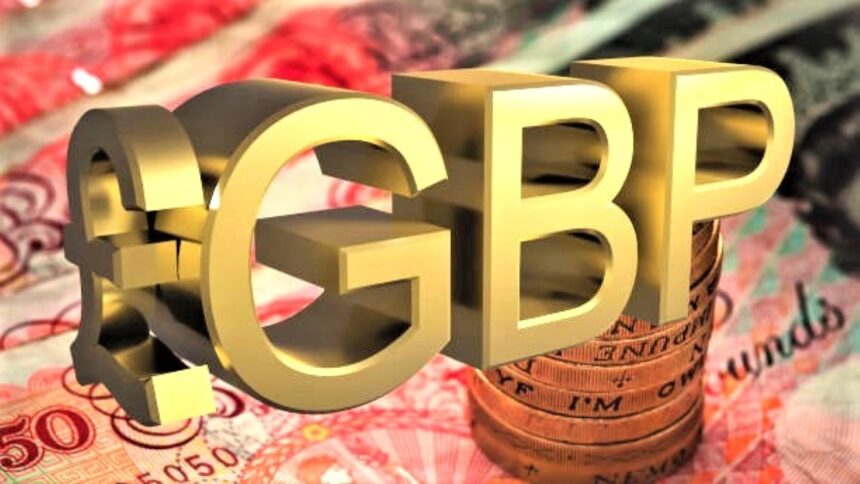The British Pound tumbled on Friday, driven lower by disappointing UK retail sales data and rising strength in the US Dollar amid global trade optimism. The weaker-than-expected consumer spending figures from the UK stoked fears of economic stagnation, while anticipation of key US economic data and the upcoming Federal Reserve policy meeting further pressured the GBPUSD pair.
UK Retail Sales Fall Short of Expectations
The Pound Sterling came under renewed selling pressure after data from the UK’s Office for National Statistics (ONS) revealed that retail sales rose only 0.9% in June, falling short of the market consensus of 1.2%. This followed a steep 2.7% contraction in May, highlighting the volatility and weakness in the UK’s consumer sector.
On an annual basis, retail sales increased by 1.7%, just below the projected 1.8%, underscoring tepid domestic demand. While higher fuel demand and strong department store sales lent some support, a notable drop in non-food store sales offset the gains, indicating that UK households remain cautious amid persistent cost-of-living pressures and global economic uncertainty.
Slowdown in UK Private Sector Activity Adds to Bearish Sentiment
In addition to retail figures, the S&P Global UK Composite PMI for July also fell short of expectations. The flash reading came in at 51.0, below both the anticipated 51.9 and the previous month’s 52.0. Although still above the 50.0 threshold indicating expansion, the data signals a moderate pace of growth, and a continued softening in the services and manufacturing sectors.
A combination of global trade headwinds, sluggish hiring, and cautious business sentiment have curbed overall output. This economic backdrop adds pressure on the Bank of England (BoE) as it approaches its August policy meeting.
BoE Policy Expectations in Focus
Traders are now closely watching for signals from the BoE regarding its interest rate decision on August 1. Given the recent moderation in inflation and weaker economic prints, expectations for a dovish pause or rate cut are mounting. Markets are currently pricing in a 60% chance that the central bank will maintain rates at 5.25%, with some analysts speculating that policymakers may hint at future cuts if economic conditions deteriorate further.
Any dovish shift would likely add downward pressure on the Pound in the short term, especially if the Federal Reserve signals a firmer policy stance.
UK-India Free Trade Agreement Offers Long-Term Hope
In a rare bright spot for UK markets, Prime Minister Keir Starmer announced a landmark Free Trade Agreement (FTA) with India, fulfilling a major campaign promise of the Labour Party. The deal opens up new market opportunities for British exporters in sectors such as textiles, liquor, and automobiles.
While the agreement is unlikely to have an immediate impact on the currency, it represents a strategic win for the UK’s post-Brexit trade agenda. Analysts believe that, over time, such agreements can help offset some of the growth headwinds stemming from reduced EU trade flows.
US Dollar Bolstered by Trade Optimism and Fed Anticipation
The US Dollar gained ground across the board, supported by growing optimism that the US will soon finalize a trade agreement with the European Union. According to a Financial Times report, both sides are nearing a tariff deal that could ease trade tensions and boost bilateral commerce.
Washington’s recent string of trade pacts, including with Japan and now possibly with the EU, has reduced concerns that President Donald Trump’s tariff policies would hurt the US economy. The latest deal with Japan included a slashing of automobile tariffs to 15%, which could improve supply chains and reduce consumer prices.
Tariff-Driven Inflation Risks Remain
However, not all is rosy. The latest US CPI report showed signs that tariffs may be pushing up prices. With inflation a key concern for the Federal Reserve, attention now shifts to the PCE Price Index for June, scheduled for release next week. This gauge is the Fed’s preferred inflation metric, and any upside surprise could influence future policy decisions.
Fed Expected to Hold Rates, Guidance in Focus
The Federal Open Market Committee (FOMC) will announce its monetary policy decision on Wednesday, July 31. According to the CME FedWatch Tool, markets are fully pricing in a hold, keeping the benchmark interest rate in the 4.25%-4.50% range.
With the rate decision largely priced in, investor focus will be on Chair Jerome Powell’s press conference. Markets will scrutinize Powell’s remarks for any hints about future rate cuts, especially amid ongoing concerns about inflation and global growth.
If the Fed adopts a neutral-to-hawkish tone, it could reinforce USD strength, putting additional pressure on GBPUSD and other currency pairs.
Upcoming Data: US Durable Goods Orders
Before the Fed meeting, traders will analyze the US Durable Goods Orders data for June, set to be released at 12:30 GMT on Friday. Economists forecast a sharp 10.8% decline in new orders, reflecting potential cooling in capital goods demand.
While the drop may signal slowing investment, a smaller-than-expected decline could buoy the US Dollar further by implying resilient corporate confidence.
Conclusion: Pound on Defensive, USD Poised for Further Gains
The British Pound’s outlook remains bearish in the short term, weighed down by disappointing retail data, sluggish PMI figures, and uncertainty surrounding BoE policy. While the UK’s free trade deal with India is a positive development, its economic impact will be gradual rather than immediate.
In contrast, the US Dollar continues to benefit from strong relative fundamentals, trade momentum, and hawkish expectations from the Fed. The GBPUSD pair could remain under pressure, especially if upcoming US data reinforces the narrative of American economic resilience.
Investors should brace for increased volatility in the coming week as central bank decisions, inflation data, and trade developments unfold.
Disclaimer: This blog is for informational purposes only and does not constitute financial advice. Always conduct your own research and consult a professional advisor before making investment decisions.
[sc_fs_multi_faq headline-0=”h2″ question-0=”Why did the Pound Sterling fall on July 25, 2025?” answer-0=”The Pound dropped due to weaker-than-expected UK retail sales and PMI data, signaling softer economic conditions and dampening expectations for further BoE rate hikes.” image-0=”” headline-1=”h2″ question-1=”What was the UK Retail Sales data for June 2025?” answer-1=”Retail sales rose 0.9% month-over-month, missing the 1.2% forecast. Year-over-year growth was 1.7%, below the 1.8% estimate.” image-1=”” headline-2=”h2″ question-2=”What is the significance of the UK-India Free Trade Agreement?” answer-2=”It opens new export opportunities for UK businesses in sectors like liquor, textiles, and automobiles. While positive for long-term trade, it has limited short-term impact on the Pound. ” image-2=”” count=”3″ html=”true” css_class=””]









